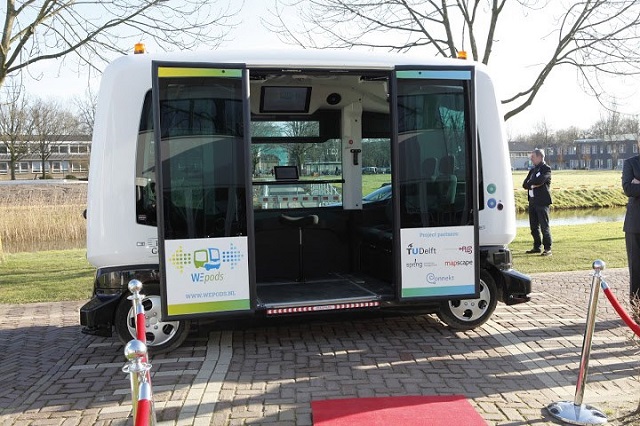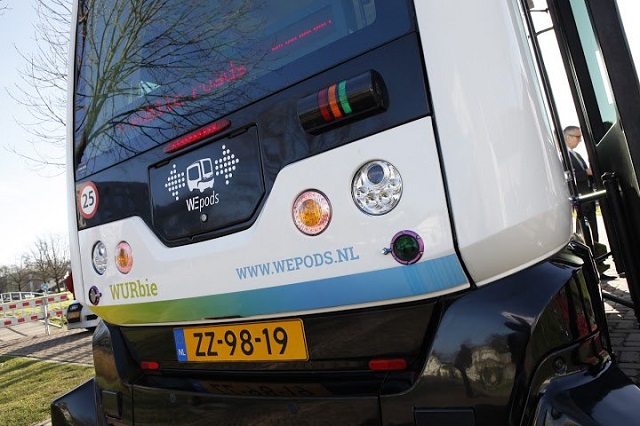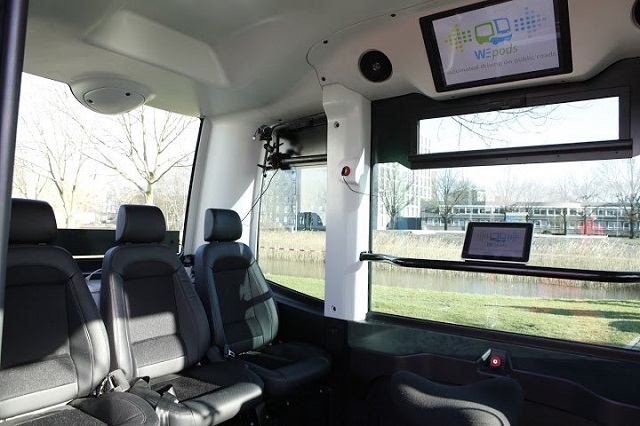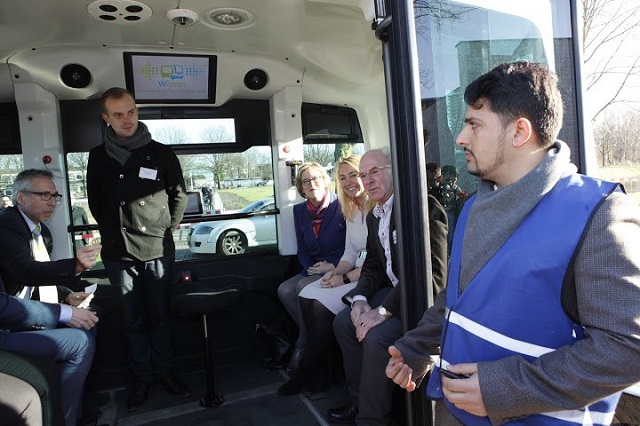The WEpod driverless vehicles were put to the test yesterday, and will gradually make their way to public roads this summer.
Schultz van Haegen, the Dutch Minister of Infrastructure, launched the test phase of WEpod driverless vehicles on the campus of Wageningen University, and announced that if this phase turns out to be a success, a route expansion is in place along the Food Innovation Strip, to the Ede-Wageningen intercity railway station. Gelderland became this way the first region to see self-driving vehicles on public roads.

During this test phase, not only the technology that keeps this vehicle moving will be put under a microscope, but also such aspects as certification, insurance, liability, human behaviour, legislation, and road management and design. To bring all of these together, educational institutions will collaborate with companies and authorities in several different areas.

WEpods are definitely not the first driverless shuttles around, since there have been initiatives all around the world, with results such as the Rotterdam Rivium Park shuttle, the Heathrow shuttles and the Masdar City pods in Abu Dhabi. However, the Dutch shuttles will be the first ones to drive on public roads, in normal traffic.
The shuttles measure 275 cm in height, 199 cm in width, 393 cm in length, and provide room for up to 6 people in their cabins. Doors are operated automatically and there’s also a platform lift for wheelchairs. Don’t expect the WEpods to be lightning fast, as they can only get to 40 km/h (25 km/h in the test phase). If it wasn’t already obvious, these are electric vehicles, as creating a driverless shuttle that uses conventional fuels wouldn’t have only been an incredible disaster, but it also would have defeated the entire purpose of the WEpods.

“People will always want to travel. It is only the way in which they travel that will change,” explained Conny Bieze, a member of the Provincial Executive. “This is certain. With this pilot, we can help shape the future. This initiative will contribute to the emergence of new forms of public transport. This innovative approach is seamlessly in line with the ambitions of the innovative Food Valley Region.”

“With the WEpod, we are entering a completely new stage of the voyage of discovery that the Netherlands embarked on with the aim of making transport more flexible, safer and cleaner,” concluded Minister Schultz. “With this project we are taking new steps towards making self-driving transport a reality in practice. It is only through practical testing that we can acquire new knowledge, not just technical knowledge, but also knowledge regarding safety, liability and privacy. Moreover, this initiative opens up new economic opportunities for our automotive sector.”

Things really seem to be moving in the right direction as far as transport is concerned, at least in some parts of Europe. Also this week, Germany opened the first 3 miles of a 60-mile bicycle highway, which truly sounds mind-blowing, considering that other European countries aren’t able to build a normal driveway that long.
Be social! Follow Walyou on Facebook and Twitter, and read more related stories about South Korea’s road-powered electric vehicles, or Google’s driverless EV.










